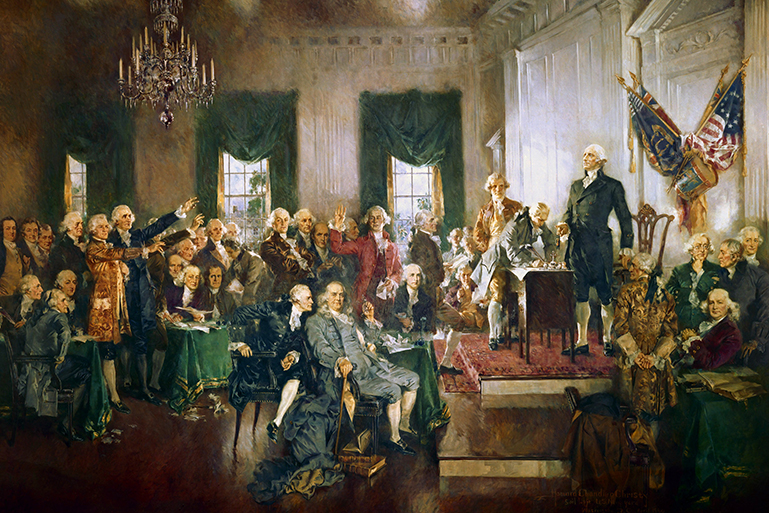
A recent article in the Wyoming Law Review by Chuck Michel and Kostas Moros of the Michel & Associates law firm makes a very valid and compelling point about the right to keep and bear arms, as well as our defense of it.
It’s common on social media and on gun websites for pro-gun people to mock anti-gun groups for not knowing what an “assault rifle” is or for their use of the term “assault weapon” when calling for bans against semi-automatic rifles. But, when we do that, we might be conceding valuable ground.
Why? Because recent (likely erroneous) lower court rulings have been trying to narrow the firearms that are protected by excluding “weapons of war.”
But the Supreme Court’s NYSRPA v. Bruen decision doesn’t work that way. Instead of being required to prove a need for self-defense and show that it’s more important than a government’s interest in maintaining public safety, the burden now falls on hoplophobes to show that gun control laws are constitutionally consistent with America’s text, history and tradition of gun regulation.
To prove that the law is constitutional, they need to show that the restriction was common practice at the time that the Second Amendment was ratified. If there were no comparable laws from the period (not including discriminatory laws rendered invalid by the Fourteenth Amendment, of course), then the law in queston is unconstitutional.
In other words, the Second Amendment means what it meant when it was ratified. So we have to look at what common attitudes about gun rights were at the time to inform any truthful interpretation of its legal meaning today.
The currently fashionable talking point that “weapons of war” were excluded must also be supported by the laws and traditions of the founding period. But as the authors point out, that simply isn’t the case. Such arguments are . . .
…an overly sanitized version of the Second Amendment that our founders, as well as their immediate descendants in the 19th century, would consider unrecognizable. While prior generations of Americans undoubtedly believed self-defense, hunting, and sport were all important components of the right to keep and bear arms, an overriding purpose frequently dominated their discussion of that right: preventing and responding to tyranny.
The authors go on to point out that this “doomsday provision” view of the Second Amendment– also known as the “insurrectionist theory” of the right to keep and bear arms in anti-gun circles — isn’t taken seriously in mainstream legal and policy circles today. Instead, they want us all to think that the Second Amendment as a bulwark against tyranny was an invention that the NRA and other ne’er-do-wells came up with in recent decades to justify unlawful behavior and unreasonable restrictions on governments’ ability to limit gun rights.
But, the historical record doesn’t support that argument, and the authors do a great job of finding historical proof that the Second Amendment really is a “doomsday provision” and not a justification for concealed carriers and duck hunters.
First, they examine some modern examples of courts finding that the Second Amendment applies to military-useful weapons. Then they go back to the eighteenth and nineteenth centuries for many more Bruen-applicable examples. Finally, they explore the Jim Crow era. While they provide a good number of examples. I’ll share some of the ones I found more entertaining and relevant.
One particularly stunning modern example comes from a 2003 dissenting opinion from the Ninth Circuit, which is typically known for being “liberal” (a stolen term progressives have adopted) and anti-gun. So, when a dissent mentions the Holocaust as an example of when firearms may have been useful against tyranny — something anti-gunners fight hard to disprove all the time — it’s notable. The dissent said, in part:
The Second Amendment is a doomsday provision, one designed for those exceptionally rare circumstances where all other rights have failed—where the government refuses to stand for reelection and silences those who protest; where courts have lost the courage to oppose, or can find no one to enforce their decrees. However improbable these contingencies may seem today, facing them unprepared is a mistake a free people get to make only once.
Several other good examples from courts (including a majority opinion by the Supreme Court) in the modern era are given, but the examples from the founding era are both more numerous…and more damning for the idea that weapons of war are somehow out of bounds. Among them is a book for American lawyers at the time, explaining the common law, which said:
Whenever standing armies are kept up, and the right of the people to keep and bear arms is, under any colour or pretext whatsoever, prohibited, liberty, if not already annihilated, is on the brink of destruction.
It’s interesting to note that even Karl Marx held a similar opinion on the right to keep and bear arms (“Under no pretext should arms and ammunition be surrendered”). So in addition to the facts presented in Michel’s and Moros’ article, this clearly isn’t a strictly American idea. If the father of communism himself opposed any pretext for disarming the population, clearly Americans should have the same rights.
As firearms technology improved during the nineteenth century, the idea of banning them was never seriously considered, let alone implemented. So the idea that today’s technology has somehow left the protection of the Second Amendment behind is wholly unsupported. If anything, one quote from Henry Campbell Black, the author of Black’s Law Dictionary, supports an entirely opposite view.
To him “arms” under the Second Amendment included . . .
…those of a soldier. They do not include dirks, bowie knives, and such other weapons as are used in brawls, fights, and riots. The citizen has at all times the right to keep arms of modern warfare . . . . This right is not infringed by a state law prohibiting the carrying of concealed deadly weapons. . . . But a law which should prohibit the wearing of military weapons openly upon the person, would be unconstitutional.
Weapons used only for unlawful purposes and breaches of the peace, then, could be controlled, while “weapons of war” were protected. The authors go on to cite similar views.
Finally, Michel and Moros used resistance to slavery and Jim Crow as powerful examples from American history showing that the insurrectionist theory actually works in the real world and is not some kind of fevered Red Dawn fantasy that only overweight, undereducated, racist rural men with murder fantasies believe in.
One powerful example comes from the obviously wrong Dred Scott decision. When considering the idea that black people might be citizens, the racist chief judge raised the specter of armed blacks, saying that if they were indeed citizens, they could carry weapons “wherever they went.”
Exactly. The Dredd Scott decision was overturned with the ratification of the 13th and 14th Amendments. And today, no one claims that blacks or any other minorities aren’t equal citizens under the law, with all of the rights and protections that includes.
The idea that there could somehow be illegal arms, barred from civilian ownership and that governments should control them really didn’t start to spread until the fear of freed slaves got that going in the South after the Civil War. Leaders in the fight for freedom and against anti-Jim Crow not only advocated for, but used the human right to keep and bear arms to protect themselves from this tyranny.
The authors concluded with this . . .
Tyranny is not fought with a pocket pistol. History demands Americans be allowed to be far better equipped than those who suffered before us. We too often ignore this clear precedent in favor of a sanitized and ahistorical modern interpretation of the Second Amendment. The modern interpretation does the Second Amendment a disservice by limiting it so profoundly.
That’s exactly what many in the gun control advocacy business count on daily.
The authors are, of course, right. We’d be fools to let ourselves create a new and improved version of Fudd lore that privileges personal defense from muggers over the right, the ability, and the duty to resist tyrants.

